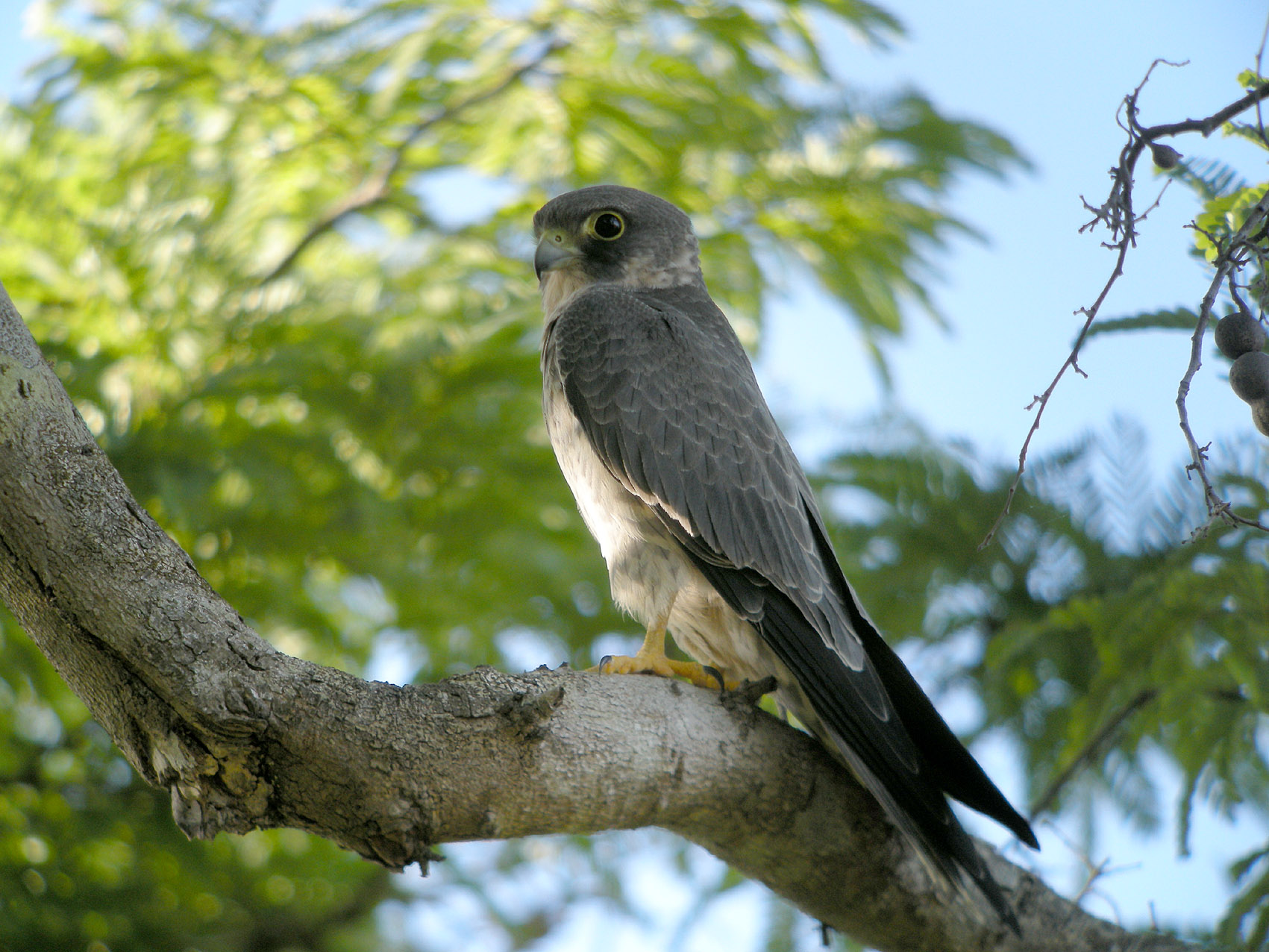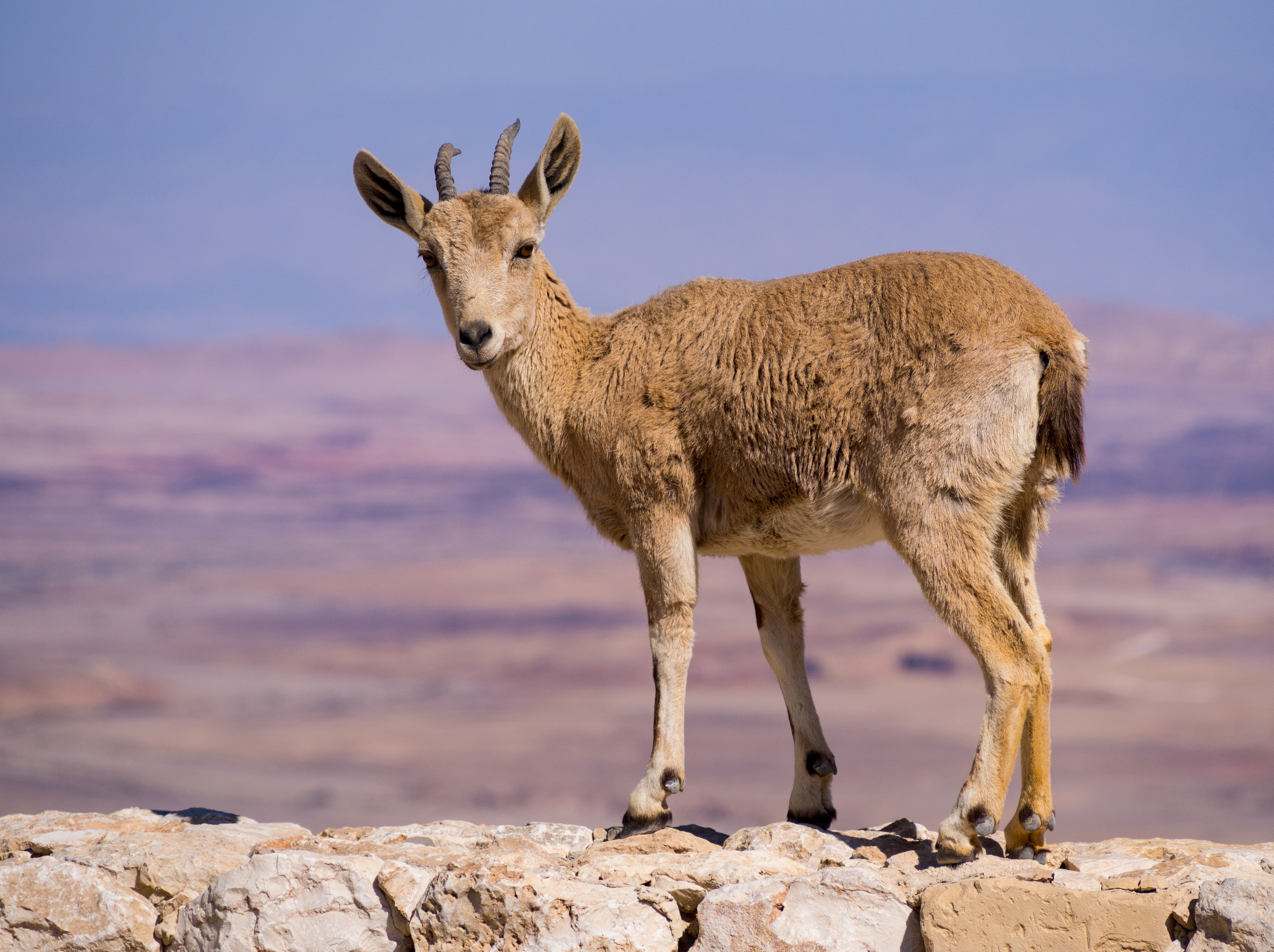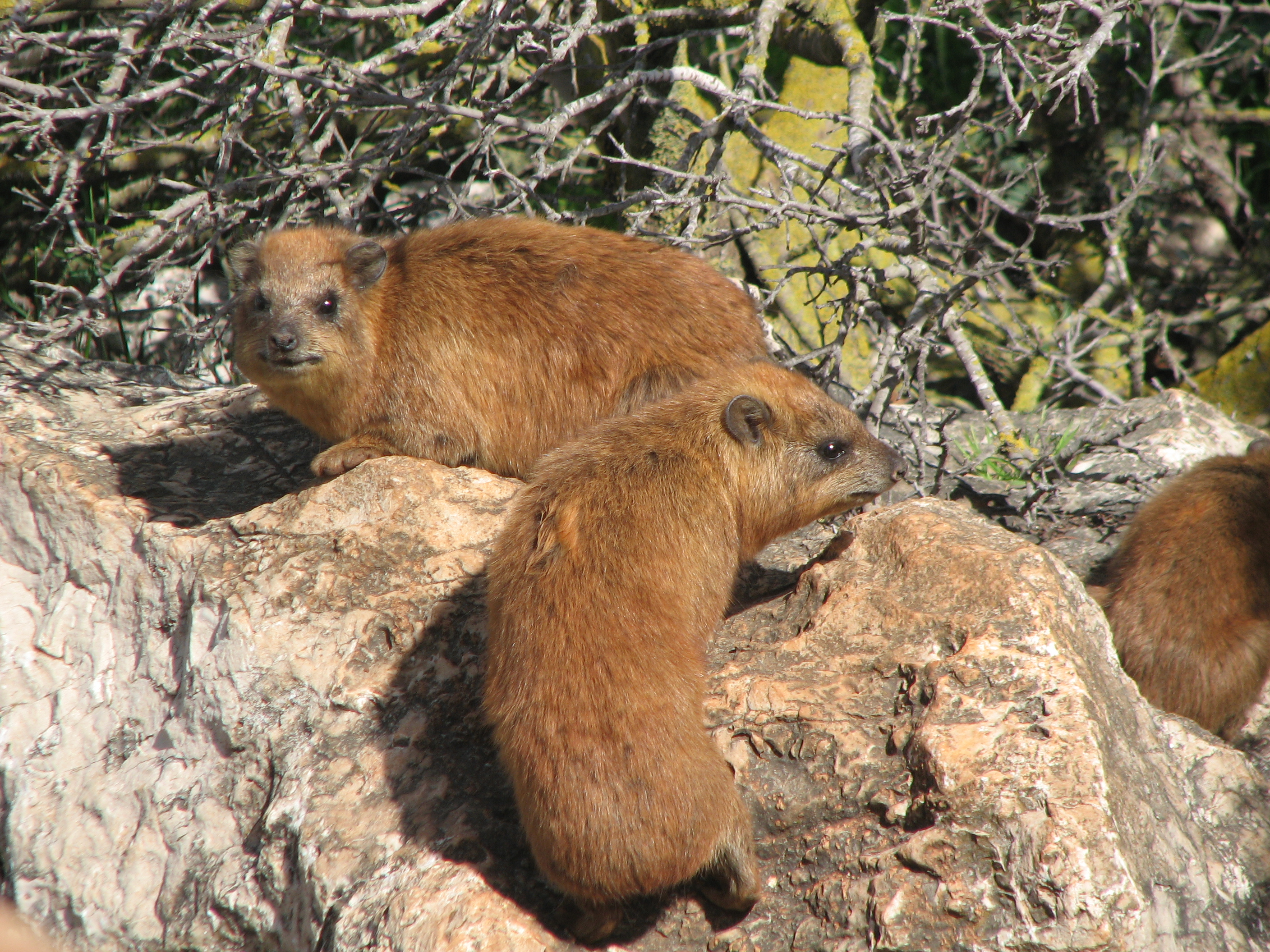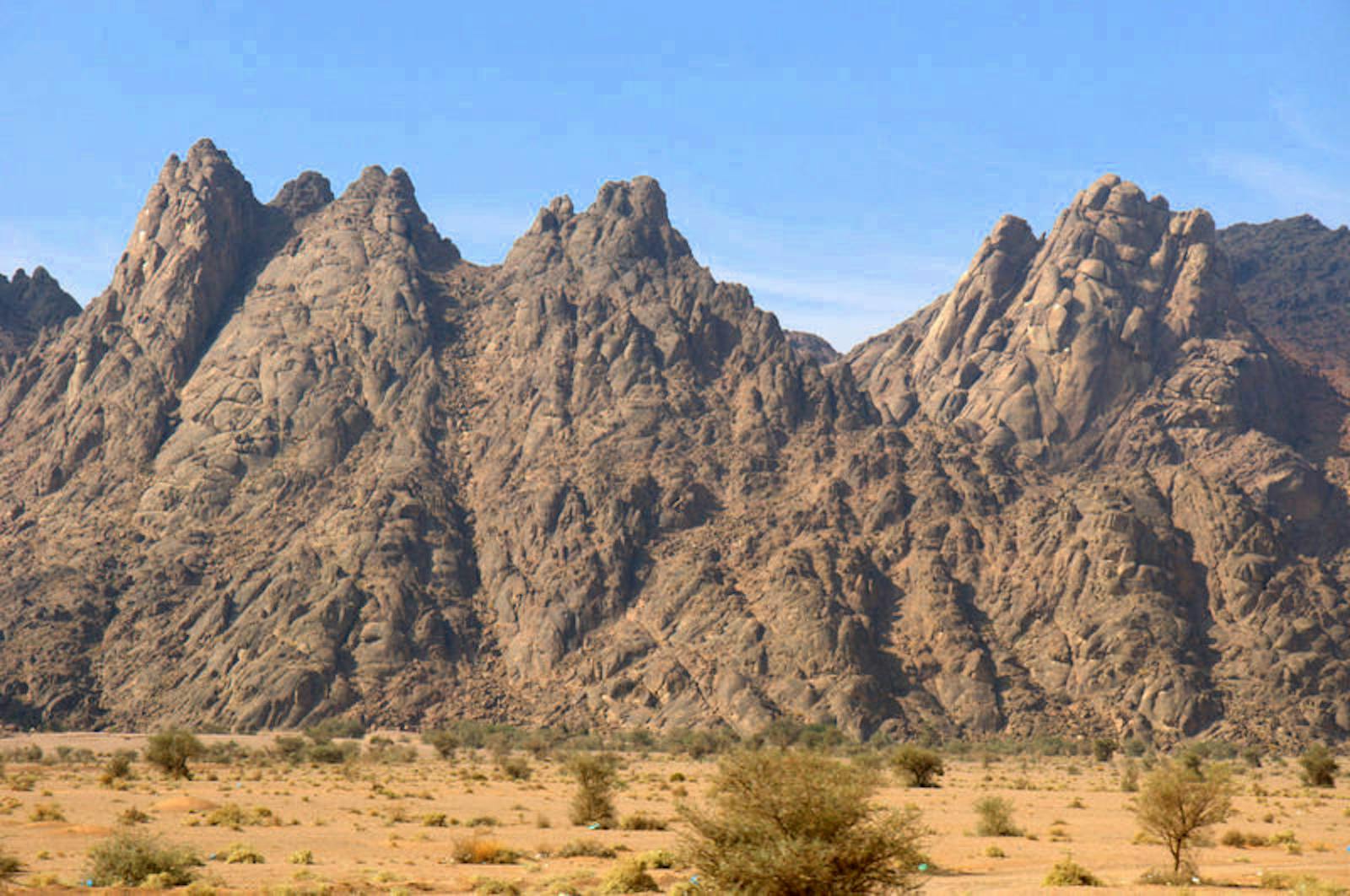Red Sea-Arabian Desert Shrublands
The ecoregion’s land area is provided in units of 1,000 hectares. The conservation target is the Global Safety Net (GSN1) area for the given ecoregion. The protection level indicates the percentage of the GSN goal that is currently protected on a scale of 0-10. N/A means data is not available at this time.
Bioregion: Red Sea, Arabian Deserts & Salt Marshes (PA26)
Realm: Southern Eurasia
Ecoregion Size (1000 ha):
31,539
Ecoregion ID:
837
Conservation Target:
33%
Protection Level:
1
States: Egypt, Israel, Jordan, Palestine, Saudi Arabia, Yemen
Hundreds of thousands of migrant birds pass through this ecoregion every year on the perilous journey across the Red Sea. The landscape is highly varied, ranging from coastal intertidal flats and sandy bays to rocky mountain peaks and hyper-arid desert valleys endowed with millennia-old rock art. Hyrax, Dorcas gazelle, and Nubian ibex can be found on the ground, whilst white storks, black kites, and the vulnerable sooty falcon grace the skies.

The flagship species of the Red Sea-Arabian Desert Shrublands ecoregion is the sooty falcon. Image credit: Creative Commons
This ecoregion encompasses a great diversity of habitats, stretching from southwest Yemen to just north of the Dead Sea in Jordan with sections of Saudi Arabia, Israel, and Egypt. Coastal habitats transition from mangrove swamps and sea grass beds to occasional intertidal mud flats and salt marshes, with sandy bays and coastal lagoons in some areas. Gravel plains and sand dunes are typical further inland. In Saudi Arabia, the northern half of the fertile Tihama coastal plain and most of the mountains north of Mecca are included, as well as the eastern fringe of the southern ranges.
Lava fields dotted with white volcanoes can be found further east in Saudi Arabia, and in Jordan, the landscape varies from the hyper-arid desert of Wadi Rum in the South, to wetlands lying 420 m below sea level around the Dead Sea. Rocky mountains, sandy plains, and the uplifted coral reefs at Ras Mohammed are notable features in Egypt’s Sinai peninsula. Temperatures in the region range from 30–35°C in the summer to 15–20°C in winter, with slightly cooler temperatures at higher altitudes. Annual rainfall varies considerably across the region, although is generally low.
Mangrove swamps are dominated by Avicennia, with species such as Suaeda vermiculata, Zygophyllum coccineum, and Halopeplis perfoliate found in salt marshes. Acacia and Haloxylon are dominant in desert areas, forming scanty shrublands alongside Artemisia, Anabasis, and Ziziphus spina-christi. In Wadi Rum, Juniperus trees can be found on higher peaks and along valleys where remnant stands of pistachio, fig, olive and date palms also exist. Perennial grasses such as Pancium turgidum and Pennisetum divisum are a common feature of small sand dunes across the region.

Juvenile Nubian ibex. Image credit: Creative Commons
The ecoregion is notable for its diverse avifauna, with a remarkable 241 breeding and migrating species recorded in Ras Mohammed National Park. This headland on the tip of the Sinai Peninsula is an important bottleneck for birds making the crossing over the Red Sea, averaging up to 12,000 birds resting in the area during peak autumn migration. Species include the great white pelican, black kite, and white storks which form ‘rivers’ in the sky. These birds tend to move up the peninsula’s west coast to El Tor to utilize a steep-sided coastal ridge in order to gain altitude for the crossing over the Gulf of Suez. Qishran Bay is purported to host Saudi Arabia’s—possibly the world’s—densest population of the sooty falcon. 
On the ground, the sand cat, Nubian ibex, rock hyrax, Rüppell’s fox, Dorcas gazelle, and Blanford’s fox can be found in a few localities around the shrublands, whilst the regionally endemic and endangered sub-species of cyprinodont, the Dead Sea tooth carp, can be spotted in Jordan’s Fifa wetlands.
Nomadic pastoralism is common across the shrublands, with some fishing around coastal areas. Irrigation cultivation of crops such as wheat and alfalfa occurs in some wadis and silt flats, although much of the hilly areas are unsuitable for agriculture. Rock paintings and engravings dating back to at least 10,000 BC can be seen in the UNESCO-recognized Wadi Rum, alluding to the region’s ancient settlements. Protected areas are largely concentrated in the Egyptian, Israeli, and Jordanian sections of the ecoregion, encompassing both marine and terrestrial ecosystems.

Rock hyrax. Image credit: Creative Commons
Tourism is a major threat to the region’s habitats, most intensively around coastal areas but also in popular destinations such as Wadi Rum. Pollution, relentless coastal development and extensive use of 4X4 vehicles on the fragile soils have all degraded the environment, with diving and snorkeling activities posing additional threats to marine wildlife. Salinization of soil as a result of intensive water pumping to support increasing cultivation in some areas is likely to have a major impact on native vegetation, which is compounded by overgrazing. The region’s migrant bird population are affected by collisions with power cables as they tend to fly at low altitudes coming into shore.
The priority conservation actions in the next decade will be to: 1) continue to work on developing a more sustainable tourism strategy, especially around coastal areas; 2) increase protected area coverage in the Saudi Arabian section of the ecoregion; and 3) enforce restrictions on the construction of large aerials around significant seabird breeding and stopover sites.
Citations:
- UNESCO (2019) ‘Wadi Rum Protected Area’. [Online]. Available from: https://whc.unesco.org/en/list/1377/ [Accessed 29/08/19]
- Harhash, K.A. & Paleczny, D. (2007). ‘The State of Ras Mohammed National Park’. [Online]. Available from: https://www.cbd.int/doc/pa/tools/The%20State%20of%20Ras%20Mohammed%20National%20Park.pdf [Accessed 29/08/19]
- Egypt Ministry of State for Environmental Affairs (2019). ‘Egypt’s Fifth National Report to the Convention on Biological Diversity’. [Online]. Available from: https://www.cbd.int/doc/world/eg/eg-nr-05-en.pdf [Accessed 29/08/19]

.png?auto=compress%2Cformat&w=300)

